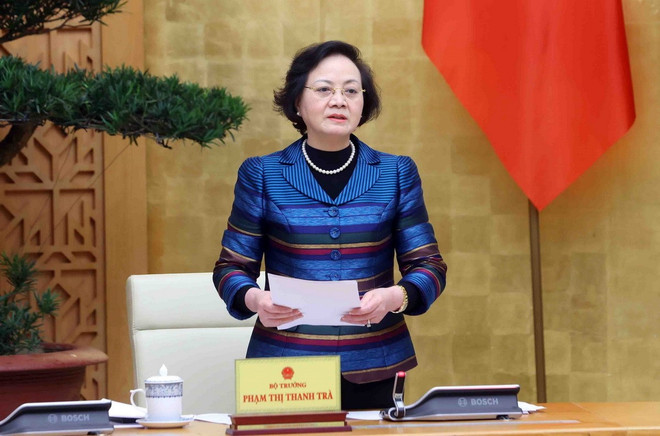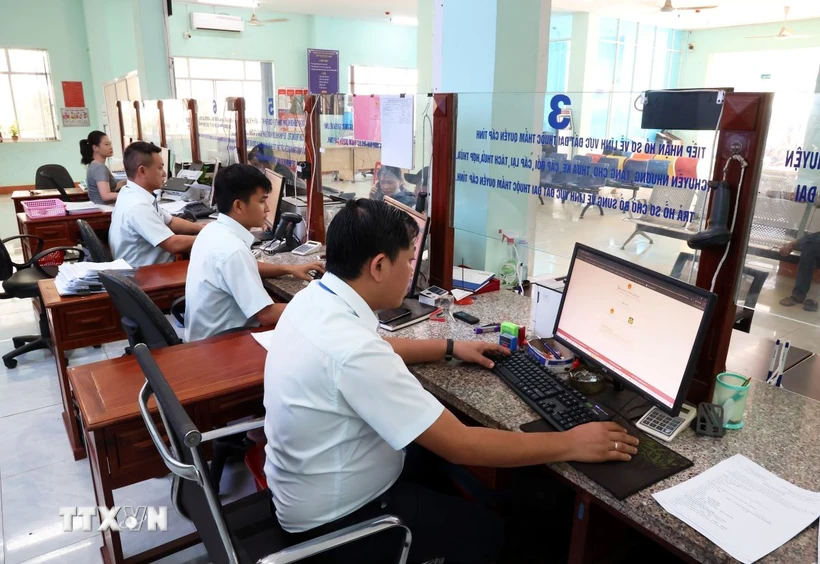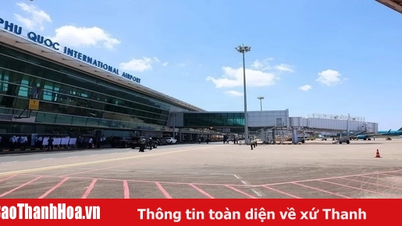Along with that, the National Assembly Party Committee is also directing the amendment and supplementation of a number of articles of the 2013 Constitution with the scope of issues on the organization of the political system; including amending and supplementing a number of articles of Chapter IX regulating local government, it is expected that there will be no district-level administrative units, and local government will only be organized into two levels.
Consulting the people on the draft amendment to the Constitution
According to Ms. Nguyen Phuong Thuy, Vice Chairwoman of the National Assembly's Committee on Law and Justice , the 9th Session of the 15th National Assembly is expected to open on May 5. On May 6, the Committee for Drafting Constitutional Amendments will announce the public consultation on the draft Constitutional Amendments, after which the National Assembly will discuss this content, in combination with relevant laws, including the Law on Organization of Local Government. Therefore, the Law on Organization of Local Government must be submitted at the beginning of the session for National Assembly deputies and the people to consult, discuss and contribute opinions to the Constitution because these two contents are closely related to each other.
"Regarding the time to stop the district level, through studying the amendment of the Constitution, we expect that the Constitution will be considered and approved by the National Assembly on June 20-25. It will then serve as a basis for other laws to be passed, such as the Law on Organization of Local Government. It is expected that on July 1, the Constitution will take effect at the same time as the laws," said Ms. Nguyen Phuong Thuy.
Thus, Ms. Thuy believes that the National Assembly may have to issue a resolution on terminating the operations of district-level government agencies, dissolving district-level administrative units, and terminating the operations of district-level government agencies at the time the Constitution and laws come into effect.
On July 1, the local government apparatus switched to a two-level government model.
The project to merge some provincial-level administrative units, not organize at the district level, and continue to merge commune-level administrative units is being focused on by the Ministry of Home Affairs to thoroughly and qualitatively complete and report to the Central Executive Committee of the Party at the upcoming 11th Conference.
Minister of Home Affairs Pham Thi Thanh Tra said that after this conference, all related contents, the number of provincial-level administrative units that need to be rearranged and merged, have become clear, as well as the two-level local government model. After the Central Government approves, on April 16, a national conference will be held to deploy the project of merging provincial-level and commune-level administrative units and organizing two-level local governments.
The Ministry aims to submit to the National Assembly Standing Committee the work related to the merger of provinces and communes and the organization of two-level local governments before June 30. By this time, the entire reorganization of commune-level administrative units will be completed. 
From July 1, when some contents of the Constitution are amended and the Law amending and supplementing the Law on Organization of Local Government and related laws come into effect, the activities of district-level local governments will end.
It is expected that on July 1, the local government apparatus will switch to a two-level government model, with only provincial and grassroots levels remaining.
“On August 30, the arrangement and merger of provincial administrative units will be completed. The entire political system, after being rearranged and reorganized, will officially come into synchronous operation, and then work related to the congress will be carried out,” said Minister Pham Thi Thanh Tra.
According to the Minister of Home Affairs, the work related to the Fatherland Front and socio-political organizations will be completed in parallel according to the above milestones. The structure and reorganization of the Court and the Procuracy, and related forces will also follow the two-tier local government model.
At a recent meeting with veteran revolutionary cadres, meritorious people, and outstanding policy families in the Central Highlands region held in Da Nang, General Secretary To Lam said that it is expected that the administrative apparatus system will be restructured into 3 levels: Central, provincial/municipal, and commune/ward.
At the end of March, the project was completed and reported to the Politburo and the Secretariat. The submission and project are currently receiving comments and being finalized to be submitted to the Central Executive Committee at the 11th Conference with a deadline of April 10.
According to the plan, based on the current rearrangement of 63 provinces and cities, the whole country will have 34 provinces and cities; no administrative activities at the district level; and about 5,000 administrative units at the commune and ward level.
The draft Resolution of the National Assembly Standing Committee on administrative unit arrangement drafted by the Ministry of Home Affairs shows that there are 11 provincial-level administrative units that are not being arranged, including Hanoi, Hue, Lai Chau, Dien Bien, Son La, Lang Son, Cao Bang, Quang Ninh, Thanh Hoa, Nghe An, Ha Tinh. There are 52 provincial-level administrative units that are being arranged, including: 4 cities: Hai Phong, Ho Chi Minh City, Da Nang, Can Tho and 48 provinces.
Currently, the country has 10,035 commune-level administrative units. With the organization of about 5,000 commune-level administrative units, the number of communes after the merger is expected to decrease by about 50%, lower than the initial proposal of the Ministry of Home Affairs in the draft Resolution, which is the total number of communes and wards after the arrangement of provinces and cities is reduced by at least 70% and at most 75% compared to the total number of commune-level administrative units currently in the area.
The criteria for arranging provincial and communal administrative units closely follow the 6 criteria that have been considered and agreed upon by the Politburo, including: Natural area; population size; criteria on history, tradition, culture, religion, ethnicity; criteria on geo-economics (including criteria on geographical location, scale and level of economic development); criteria on geopolitics; criteria on national defense and security.
The Ministry of Home Affairs encourages naming new communes and wards according to serial numbers or according to the names of district-level administrative units (before rearrangement) with serial numbers attached to facilitate digitization and updating of information data./.
According to VNA
Source: https://baothanhhoa.vn/du-kien-ngay-1-7-chinh-quyen-dia-phuong-chuyen-sang-mo-hinh-2-cap-244439.htm



![[Photo] General Secretary To Lam attends the conference to review 10 years of implementing Directive No. 05 of the Politburo and evaluate the results of implementing Regulation No. 09 of the Central Public Security Party Committee.](https://vphoto.vietnam.vn/thumb/1200x675/vietnam/resource/IMAGE/2025/5/19/2f44458c655a4403acd7929dbbfa5039)
![[Photo] Panorama of the Opening Ceremony of the 43rd Nhan Dan Newspaper National Table Tennis Championship](https://vphoto.vietnam.vn/thumb/1200x675/vietnam/resource/IMAGE/2025/5/19/5e22950340b941309280448198bcf1d9)
![[Photo] Close-up of Tang Long Bridge, Thu Duc City after repairing rutting](https://vphoto.vietnam.vn/thumb/1200x675/vietnam/resource/IMAGE/2025/5/19/086736d9d11f43198f5bd8d78df9bd41)


![[Photo] President Luong Cuong presents the 40-year Party membership badge to Chief of the Office of the President Le Khanh Hai](https://vphoto.vietnam.vn/thumb/1200x675/vietnam/resource/IMAGE/2025/5/19/a22bc55dd7bf4a2ab7e3958d32282c15)





















![[Photo] Prime Minister Pham Minh Chinh inspects the progress of the National Exhibition and Fair Center project](https://vphoto.vietnam.vn/thumb/1200x675/vietnam/resource/IMAGE/2025/5/19/35189ac8807140d897ad2b7d2583fbae)





















































![[VIDEO] - Enhancing the value of Quang Nam OCOP products through trade connections](https://vphoto.vietnam.vn/thumb/402x226/vietnam/resource/IMAGE/2025/5/17/5be5b5fff1f14914986fad159097a677)





Comment (0)